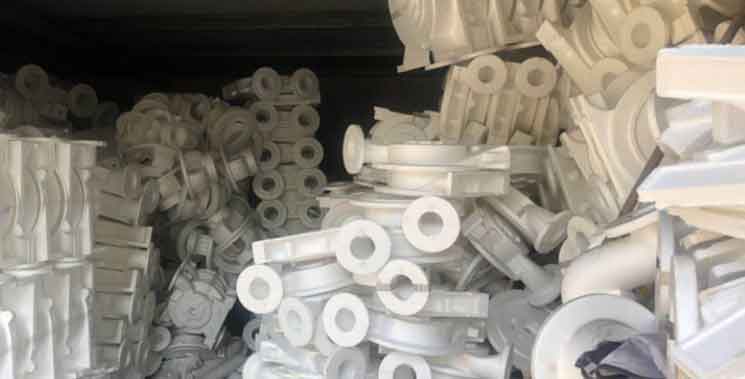Lost foam casting, also known as evaporative pattern casting or full mold casting, is a unique and fascinating metal casting process that involves transforming foam patterns into solid metal components. The process follows several key steps:

- Pattern Production: The process begins with the creation of foam patterns. These patterns are typically made from expanded polystyrene (EPS) foam, which is easily carved and shaped using CNC machines, 3D printers, or manual cutting tools. The foam patterns are exact replicas of the desired metal parts, including all intricate features and details.
- Pattern Assembly: Once the foam patterns are produced, they are assembled together to form a cluster. In the cluster, multiple patterns are attached to a common gating system, which includes pouring cups and sprues. The gating system serves as the channels through which the molten metal will flow during casting.
- Coating Application: The foam pattern cluster is then coated with a refractory material, such as ceramic, by dipping, brushing, or spraying. The refractory coating serves as the mold material, providing dimensional stability, heat resistance, and surface smoothness during casting.
- Cluster Encasement: After coating, the entire foam pattern cluster is encased in a flask or mold box, leaving the gating system exposed. Sand or other casting media is packed around the cluster, providing support during the casting process.
- Foam Pattern Removal: The flask with the encased foam pattern cluster is then vibrated to help settle the sand and create a tightly packed mold. Once the mold is ready, molten metal is poured directly into the mold cavity.
- Metal Solidification: The molten metal comes into contact with the hot refractory coating, causing the foam patterns to vaporize rapidly. As the foam patterns vaporize, they create space within the mold, which is immediately filled with the molten metal. The metal cools and solidifies, taking the shape of the original foam patterns.
- Mold Breakout: After the metal has solidified and cooled, the mold is broken open, revealing the solid metal casting. The gating system is removed, and any additional finishing processes, such as machining or surface treatments, are carried out to achieve the final product.
The lost foam casting process offers several advantages, such as the ability to create complex shapes, near-net-shape casting, reduced machining requirements, and the potential for lightweight designs. It is particularly well-suited for producing intricate components with tight tolerances and thin walls. Additionally, lost foam casting eliminates the need for traditional pattern-making and core-making processes, leading to cost and time savings.
While the lost foam casting process has numerous benefits, it also presents certain challenges, such as foam pattern stability during handling, ensuring uniform coating thickness, and managing metal shrinkage during solidification. However, with advancements in foam materials, refractory coatings, and process control, lost foam casting continues to grow in popularity and application across various industries.
